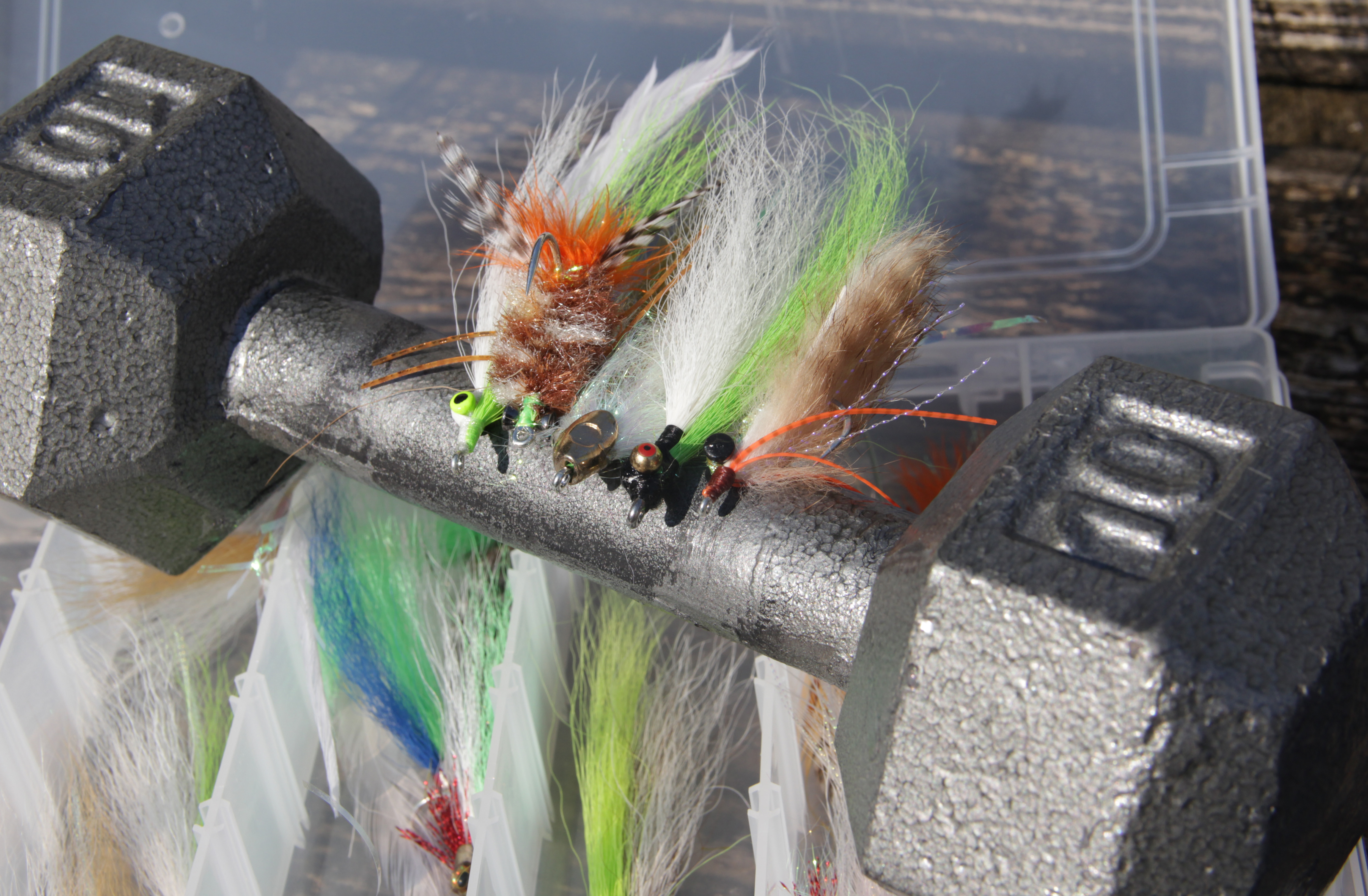June 29, 2015
By Florida Sportsman
By Chris O'Byrne
Break some rules, save your head.
 Patterns tied with dumbbell eyes and other weighting systems require adjustments in leader rigging and casting methods.
Patterns tied with dumbbell eyes and other weighting systems require adjustments in leader rigging and casting methods.
Casting weighted flies certainly brings challenges. An angler might struggle just to get the fly and line out of the water. Then, once the fly is airborne, our favorite rod and our favorite skull are at risk from these sharpened anvils. All in all, heavy flies soar with the grace of a low-flying teal meeting a tight group of #4s. But flies weighted with dumbbell eyes, wire or even wool give us more chances to catch fish.
Peter Kutzer, Orvis Company Fly Fishing Instructor, gave me a few such examples. He brought crab and shrimp patterns tied with added heft to our trip to the Keys, last January. With enthusiasm born of added opportunity, Kutzer explained that the extra weight allows these flies to sink to the bottom quicker. Well ahead of fast-moving flats species.
When I asked how he changes his cast to adapt to the weight, he was quick to discuss tackle preparation first. “I like to use the shortest, heaviest leader and tippet I can get away with. This will help the heavy fly turnover at the end of the cast.”
Even when your preparations are set and you've got the fly in the water, you may not be ready to start a cast. The heavier fly has pulled your line deep, so your back cast is being resisted more than usual. Strip the line in a couple extra times. Less line in the water will compensate for your leaded fly. Defend yourself as you begin your back cast by sweeping the rodtip to the side rather than overhead. Kutzer describes this defensive technique this way. “I come lower than normal or even sidearm, keeping that heavy fly away from me.” As your person is kept safe, the cast will seem to suffer. A fellow angler described this part of the cast with dramatic frustration as we dredged deep water around docks.
“I can't make the same… loops with these… weighted jobs as I can with regular flies!” An insightful exclamation.
Casting light flies is like driving a smoothly accelerating car. Casting a heavy fly, in the words of a buddy of mine, is more like trailering a boat. When you accelerate a vehicle towing a trailer, you know the rig won't leave the line at a normal rate, and you don't fight it. You can still accelerate the fly rod's tip when it is pulling a heavy fly, just not as quickly. Be more deliberate in pulling that fly through the air.
Transitioning from the back cast to the forward cast might make an angler see red. Red like a traffic light. Stopping a truck and trailer by powering to the light then stomping on the brakes is a bad idea! So is ending the back cast of a weighted fly in the normal, instant way. Instead, end your back cast gradually and move into the forward cast sooner. Kutzer reminds new fly fishers to keep “constant tension” on the trailing fly. This reduces the “bucking” that comes from an abrupt stop.
After the fly makes the turn, move the rodtip forward in an arc with the same slow acceleration, this time closer to overhead. Kutzer describes this picture of the transition. “I like to move the rod tip in a bit of an oval path.”
As you complete the cast, stop the rodtip gradually, even lower than you are used to. Your accuracy will suffer, so pay attention and compensate. Any hauling done with the line hand should be in a slow tempo keeping rhythm with the rodtip. Once you get all this done, false casting will only multiply your problems. Let a little line shoot and get back to fishing. Your head will thank you.
Adapting your cast in these ways will indeed change the shape of your loop. Fly line will arc through the air, then turn and go in the opposite direction in a slow circle. This looks sloppy compared to the ideal tight loop, but the loss of grace is okay. Casting heavy flies is about getting the fly back in the water, not making the Fly Fishing Film Tour. Learning to cast an ungainly weighted outfit is worth the little effort it takes. FS
First published Florida Sportsman June 2014
